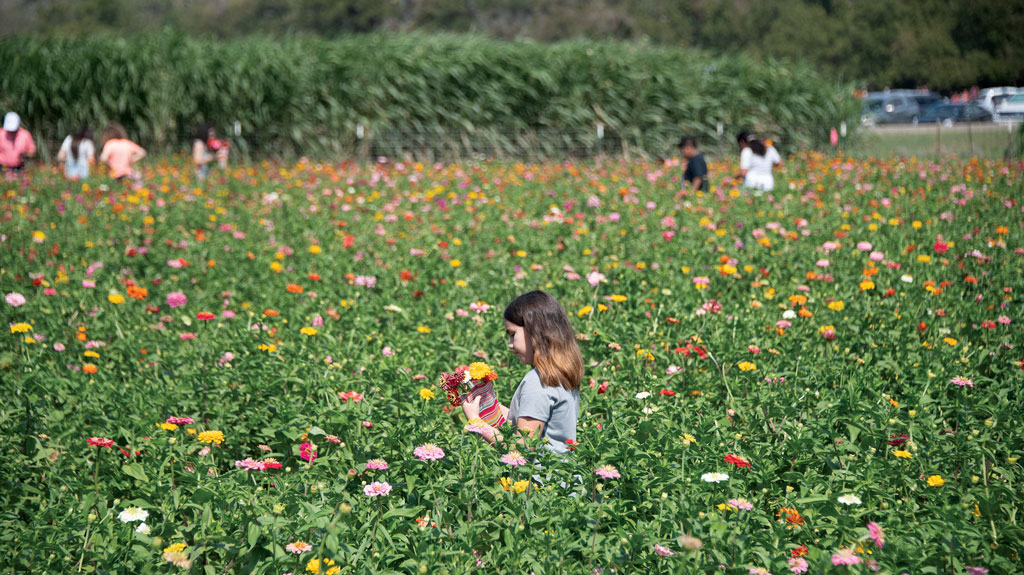
What do you do in case of oak wilt? Learn the answer below.
We’ve heard many experts say this is NOT the time to make large cuts on oaks because they are susceptible to oak wilt. But what is oak wilt?
[image id="23316" title="Luedecke" linkto="file" ] Bill Luedecke and daughter Martelle offer advice to Highland Lakes gardeners.“Oak wilt is an infectious disease caused by the fungus Ceratocystis fagacearum, which invades and disables the water-conducting system in susceptible trees. All oaks (Quercus spp.) are susceptible to oak wilt to some degree, but some species are affected more than others. Red oaks, particularly Spanish oak (Q. buckleyi), Shumard oak (Q. shumardii), and blackjack oak (Q. marilandica), are extremely susceptible and could play a unique role in the establishment of new oak wilt infections.
IDENTIFICATION OF OAK WILT
According to TexasOakWilt.org: “Foliar symptoms, patterns of tree mortality, and the presence of fungal mats can be used as indicators of oak wilt. However, laboratory isolation of the fungus is recommended to confirm the diagnosis. A trained expert, such as a county extension agent, a Texas Forest Service forester, or an arborist, should be consulted when in doubt.
Fungal mats are reliable indicators for the diagnosis of oak wilt. These specialized spore-producing structures most often form in the spring on red oaks that developed advanced symptoms of oak wilt the previous late summer or fall. Red oak infections in late spring and summer usually do not give rise to fungal mats due to high temperatures and low soil moisture. Fungal mats can be found by looking for inconspicuous narrow cracks in the bark of dying red oaks leading to hollow areas between the bark and wood. They often have a distinctive odor, similar to fermenting fruit. Fungal mats can be exposed for inspection by chopping away the loose bark.”
MARCH GARDEN DUTIES
It’s a busy month for gardening!
1. According to The Natural Gardener, we can now plant herbs.
2. Seeds: All hot-weather herbs such as basil, chives, and milk thistle.
3. Plants: All hot-weather herbs and perennial herbs such as artemesias, basil, bergamot, catmint or catnip, chives, comfrey, scented geranium, lemongrass, mints, oregano, pennyroyal, rosemary, santolina, and thyme.
4. Lawn duties: Aerate and top-dress with 1 inch of compost. An aerator can be rented and shared with several of your neighbors. Top-dress your lawns with compost before and after aerating. Apply approximately 1 inch deep of compost then rake and water it into the grass. This will save you on watering bills this summer.
5. Till in the winter crops. Allow two weeks for the cover crop to decompose in the soil before planting there again.
6. Prune hibiscus, spring flowering shrubs, and trees after they bloom. Prune and train your vines.
7. Allow bulb foliage to yellow and die before removing.
8. Feed your roses with foliar food.
9. It is time to welcome back purple martins and hummingbirds.
10. Make sure you have food available for hummingbirds and the houses cleaned out for martins.
11. Side-dress (with compost) the garlic we planted last fall.
12. Divide and move dormant perennials, roses, shrubs, and trees. Still time, but don’t wait!
As you are working in the soil, look up when you hear a LOUD nasal honking. Flocks of geese might be flying over. I heard and saw several in 10 minutes. The flocks might number 40-60 geese flying in formation. Toward the middle of the month, listen for the hummingbird flyby.
As you are planting, remember we still have a strong chance of a last freeze from March 21-30. As you are placing items in your garden for use, put something close by that you can use to protect your plants in case of a freeze. Although the peach trees are blooming, many mesquite have not begun to bud.
Keep your souls and soles in your garden!
Remember the True Master Gardener: Jesus said, “I am the vine; my Father is the Gardener.” John 15:1 Contact Bill Luedecke at The Luedecke Group Realtors at (512) 577-1463 or email him bill@texasland.net. Contact Martelle Luedecke at (512) 769-3179 or luedeckephotography@gmail.com.












